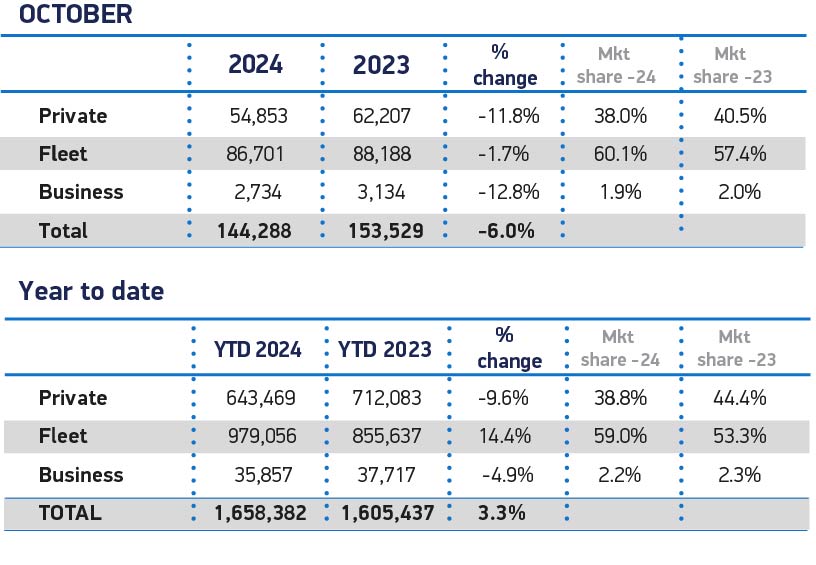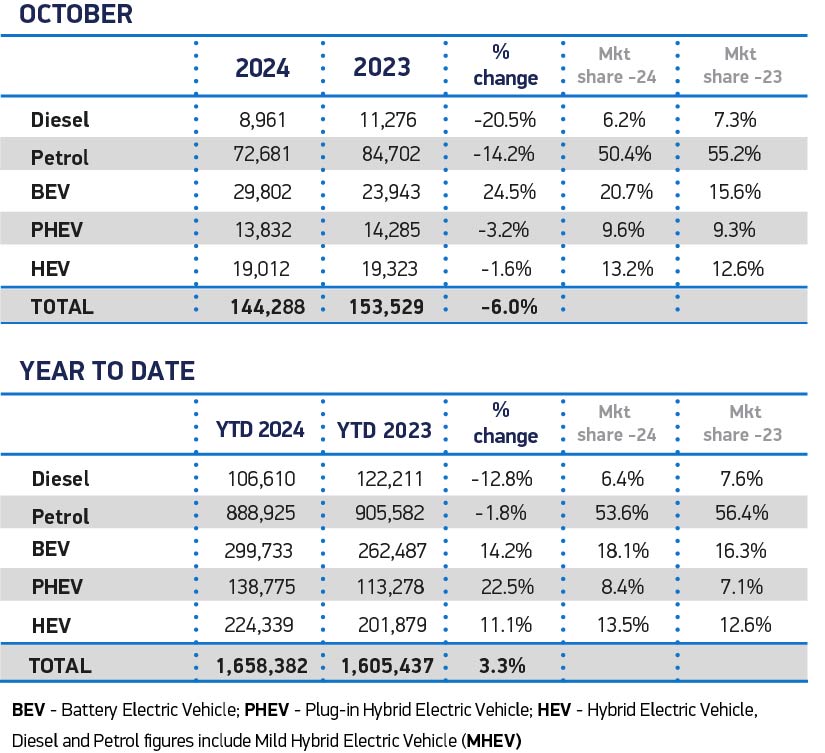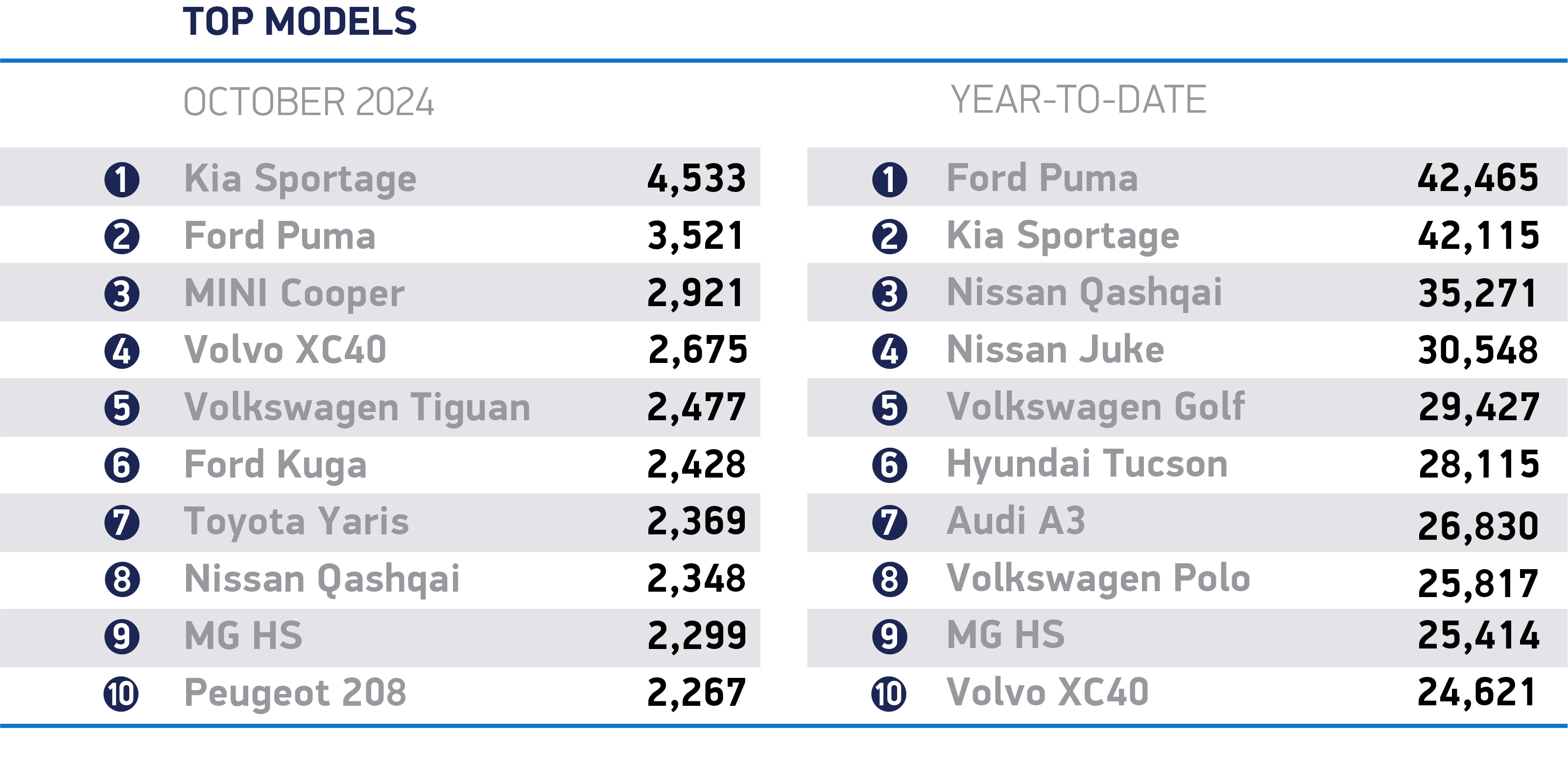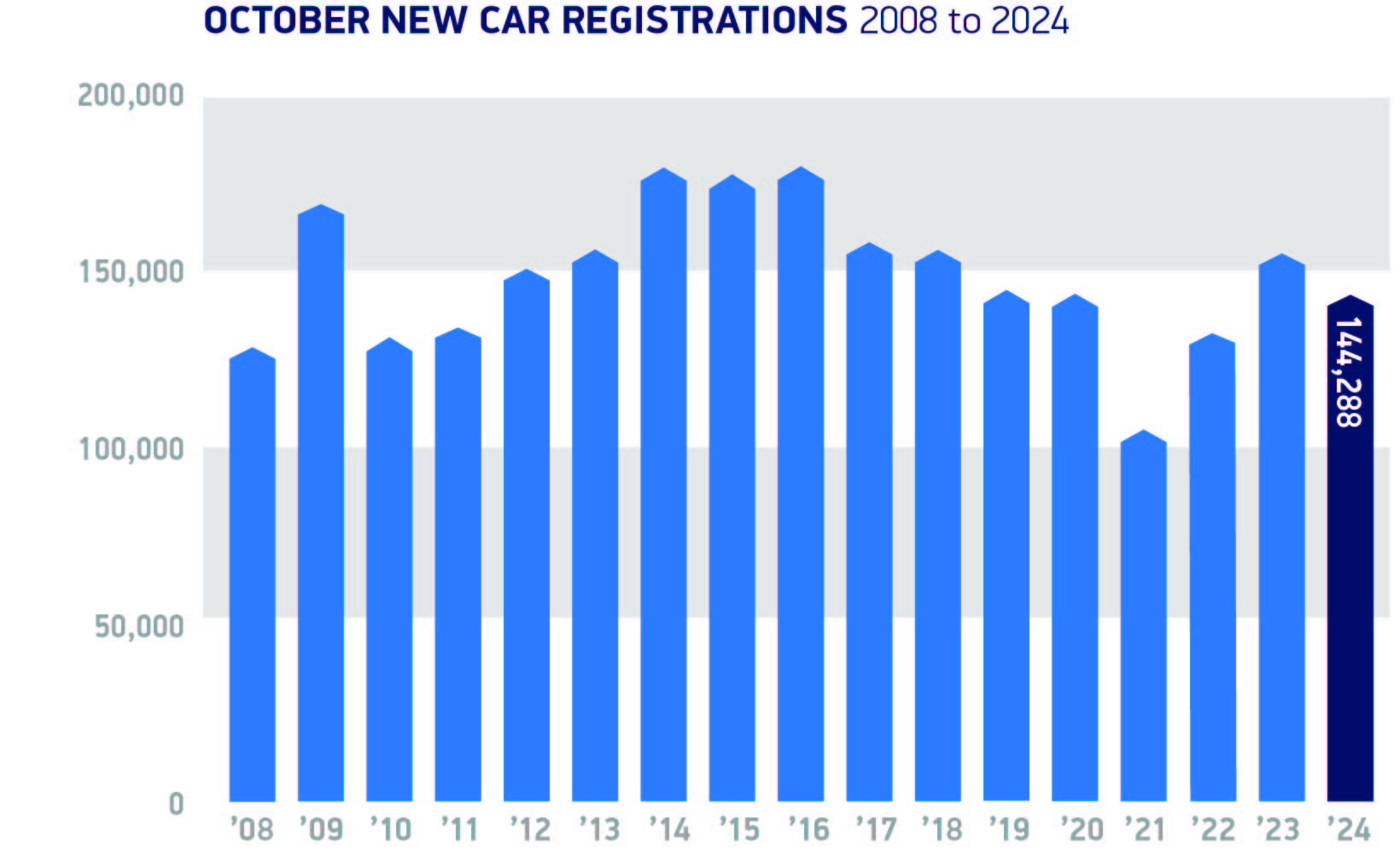The UK new car market fell for the second time this year, down by
-6.0% in October to 144,288 new registrations, according to the
latest figures from the Society of Motor Manufacturers and
Traders (SMMT).
Declines were recorded across all buyer types, with fleets
falling for the second time this year, down -1.7%, and the
low-volume business market declining -12.8%. Private purchases
continued their two-year long wane, down -11.8% meaning fewer
than four in 10 (38.8%) of new cars registered in the first 10
months have gone directly to private buyers.
The fall was driven by double-digit drops in petrol and diesel
vehicle deliveries, down -14.2% and -20.5% respectively. However,
uptake of hybrid electric vehicles and plug-in hybrid electric
vehicles also fell, down -1.6% and -3.2%. Battery electric
vehicles (BEVs) were the only powertrain to record growth, with a
raft of new models driving the strongest growth this year, up
24.5% to reach a 20.7% share of the market.
UK new car buyers now have more than 125 different BEV models to
choose from – an uplift of 38% over the last 10
months.1 While it remains the case that the average
BEV has a higher upfront cost than an ICE equivalent, widening
choice and huge manufacturer discounting mean that around one in
five BEV models now has a lower purchase price than the average
petrol or diesel car, especially for buyers able to take
advantage of schemes such as salary sacrifice.2
However, while BEV market share is increasing, October's decline
in the total market, equivalent to a £350 million loss in
turnover, highlights the challenge ahead.3 While
almost 300,000 new BEVs have reached the road in 2024, this
represents 18.1% of the market – an increase on 2023, but still
significantly short of the 22% target for this year and of the
28% which must be achieved in 2025 under the Vehicle Emissions
Trading Scheme.
While the Budget extended existing business and fleet incentives
for BEVs, the Vehicle Excise Duty and Company Car Tax changes
disincentivise low carbon vehicle purchases and fleet renewal
generally, risking a delay to the overall reduction in road
transport emissions.
Moving the market rapidly towards these ambitious targets needs
bold and compelling incentives for consumers. Manufacturers are
currently shoring up demand with historic levels of support, but
this is unsustainable in the long term as it threatens viability.
Without the government support to match the manufacturers'
commitment, there must be an urgent review of the market's
performance and the regulatory mechanisms driving the transition.
Mike Hawes, SMMT Chief Executive, said,
“Massive manufacturer investment in model choice and market
support is helping make the UK the second largest EV market in
Europe. That transition, however, must not perversely slow down
the reduction of carbon emissions from road transport. Fleet
renewal across the market remains the quickest way to
decarbonise, so diminishing overall uptake is not good news
for the economy, for investment or for the environment. EVs
already work for many people and businesses, but to shift the
entire market at the pace demanded requires significant
intervention on incentives, infrastructure and regulation.”
|
|
|
|
|
|

|
|
|
|
|
|
|
|
|
|
|
|

|
|
|
|
|
|
|
|
|
|
|
|

|
|
|
|
|
|
|
|
|
|
|
|

|
|
|
|
|
|
|
|
Notes to editors
With the Budget delivered on 30 October, publication of
SMMT's latest market outlook will be deferred until later
in November, to ensure any potential impacts are
appropriately incorporated.
1 Based on battery electric vehicle models receiving
their first registration between January and October 2024
2 Based on an average ICE vehicle cost according to JATO
of £30,600, and average costs of models listed for retail
3 Based on the fall in registrations against the average
JATO cost for all cars
|
